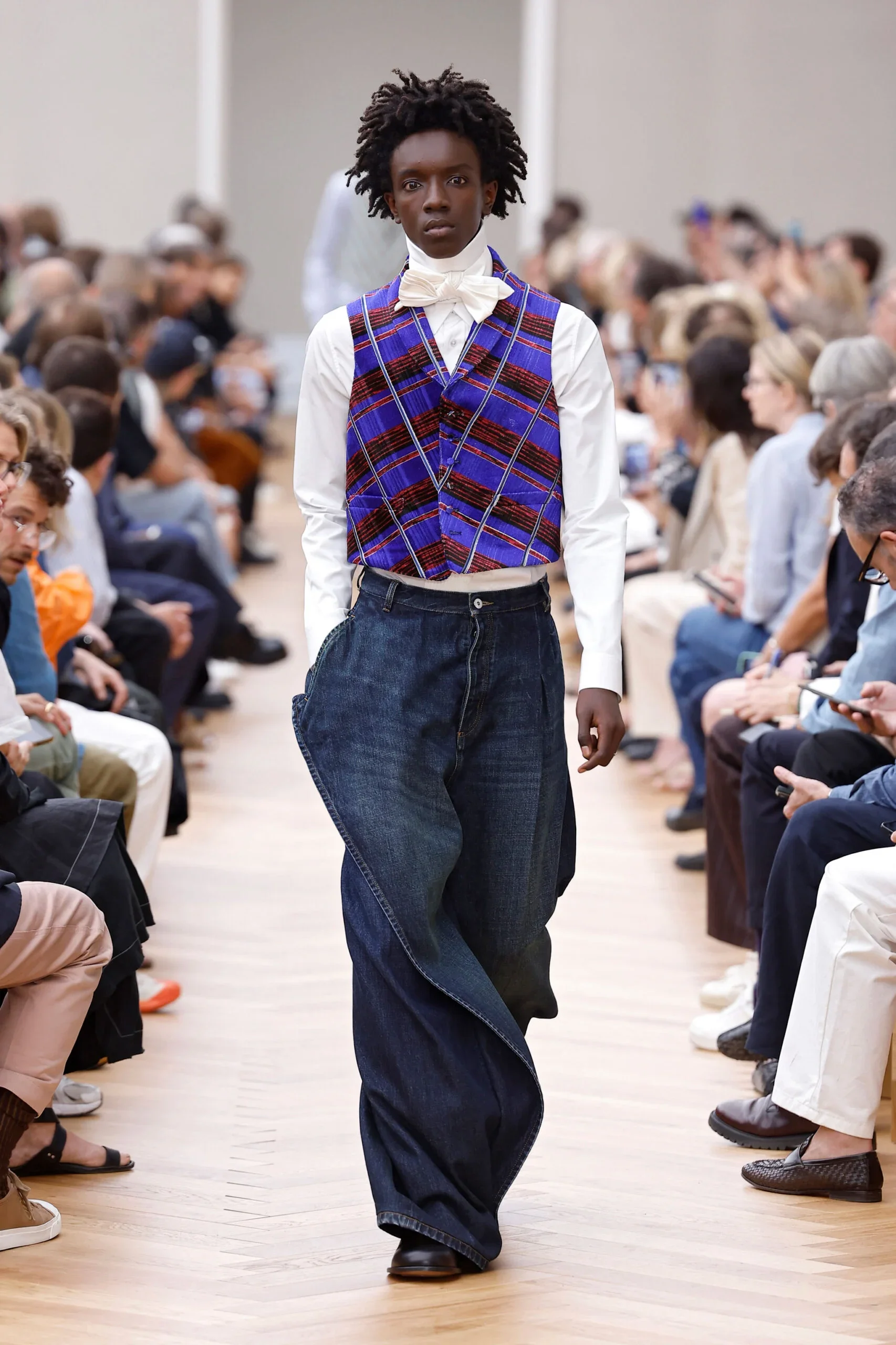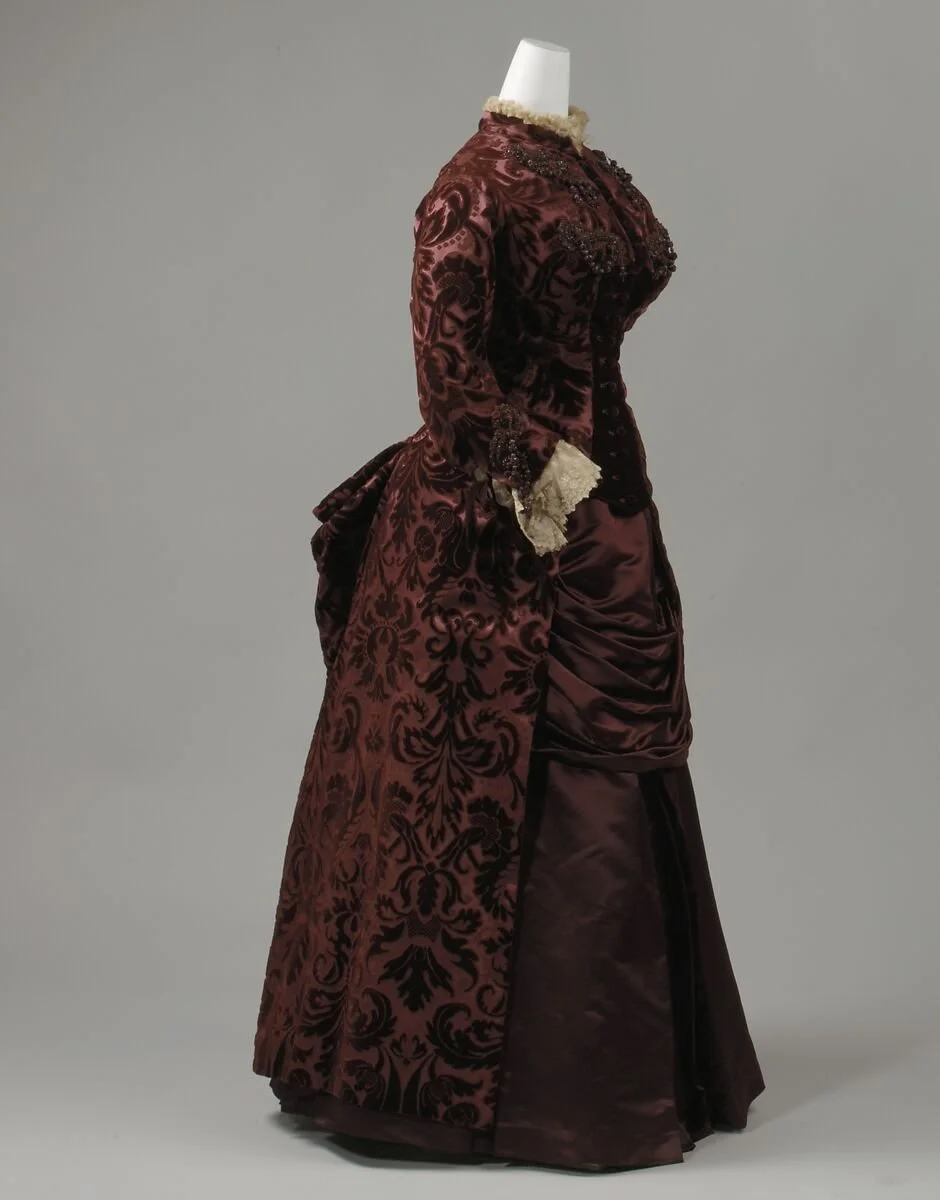Should a Fashion House End when the OG Creative Director Exits?
It seems the world’s biggest names in creative directing have been playing a game of musical chairs.
Jonathan Anderson recently exited Loewe and will now be the creative director of Dior, taking the place of Kim Jones and Maria Grazia Chiuri. Lazaro Hernandez and Jack McCollough of Proenza Schouler have been appointed as the next creative directors of Loewe. Demna has left Balenciaga, where he was for the past decade, and will now be designing at Gucci, replacing Sabato de Sarno. Pierpaolo Piccoli recently departed from Valentino and is taking the place of Demna at Balenciaga, and Alessandro Michele, who was previously at Gucci from 2015-2022, will be leading Valentino. And those are just some of the recent creative director changes in fashion news.
Dior Men’s Spring/Summer 2026, photo by Estrop, courtesy of Getty Images
Change is part of what keeps the fashion industry interesting and dynamic — but recently there has been so much upheaval within creative director roles that even the most dedicated to fashion are struggling to keep up. As the leadership landscape is ever evolving, an argument that stays in circulation is the legacy of a creative director — should a fashion house end when the original creative director passes away or exits?
A fashion house is representative of more than fashion — it is the home of history, communication, and an entire world created through design. The original creative director of a brand designs their work to their own artistic ethos in addition to commercial and consumer needs and wants. The first example of an established fashion house continuing after the death of the originator is Charles Frederick Worth and the House of Worth. Worth is considered the “father of haute couture” as he transferred made-to-order clothing and craftsmanship standards in fashion. The Met notes that “Although Worth was not the first or only designer to organize his business in this way, his aggressive self-promotion earned him the titles ‘father of haute couture’ and ‘the first couturier.’ By the 1870s, Worth’s name frequently appeared in ordinary fashion magazines, spreading his fame to women beyond courtly circles.” After Worth’s passing in 1895, his two sons, Gaston-Lucien and Jean-Philippe, continued their father’s house codes and business success until “The great fashion dynasty finally came to an end in 1952 when Charles Frederick Worth’s great-grandson, Jean-Charles (1881–1962), retired from the family business,” writes Jessa Krick.
Dress by Charles Frederick Worth, courtesy of The Met
The case of the House of Worth is both unique and reminiscent of contemporary fashion. Family-run houses are few and far between, but the endurance and willingness to persist are ever-present in today’s industry. How much of this dance is for the sake of preservation of art, culture, and legacy, and how much of it is driven by the desire to keep a billion-dollar industry growing?
The fashion industry is fueled by artistic prowess and innovative minds, along with business savvy and shrewdness — creative and technical forces come together to form such a unique field. Though at times, people feel that one is being sacrificed for the sake of the other. Are all these fluctuations in the world of creative directors indicative of the pursuit of greed over art? With the never ending switching of the world’s most influential creative directors to new houses like chess pieces, greed and power is in play, calling checkmate on the originality and integrity of the historic house.
Balenciaga designed by Cristobal Balenciaga and Demna’s, respectively.
The conversation poses a larger, philosophical question regarding the ethics of art after death. Is it “our” right to keep producing art under the brand and name of someone passed, even when it strays so far from the original? Cristóbal Balenciaga’s creations are a stark opposite of Demna’s, even with the references to the original Balenciaga. And Balenciaga is not a standout case. Modern-day fashion houses change drastically under different creative directors. Perhaps that is a good thing. In a way, the changing of creative directors further democratizes fashion. It introduces people to different companies and gives designers the room to grow and adapt their artistic creations.
Maybe that is what makes the fashion industry different. Fashion is a uniquely personal and pliable craft, and those individual personalities have to exist within a massive business. The answer to the question “Should a fashion house die when its originator does?” is an area colored by hues of grey. And maybe the industry will delve into those nuances, maybe people won’t ever reach a consensus, maybe this will be a question to continue asking and answering.




